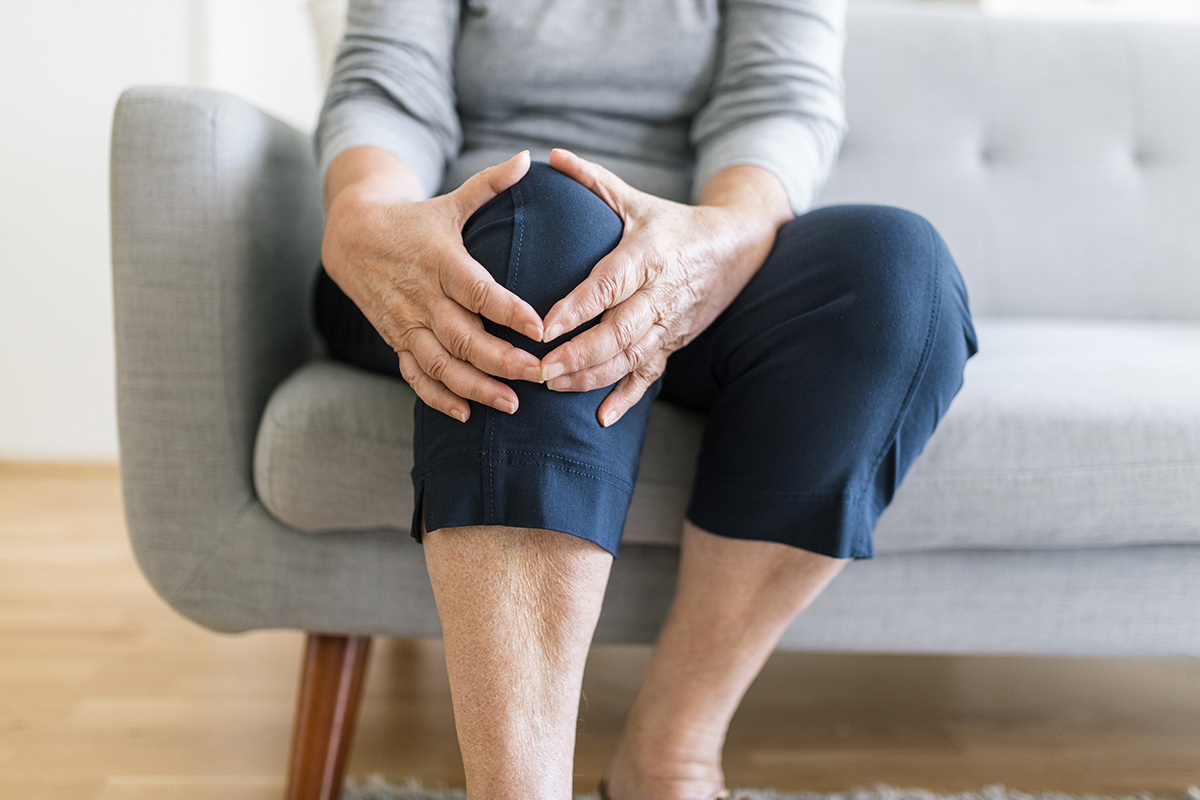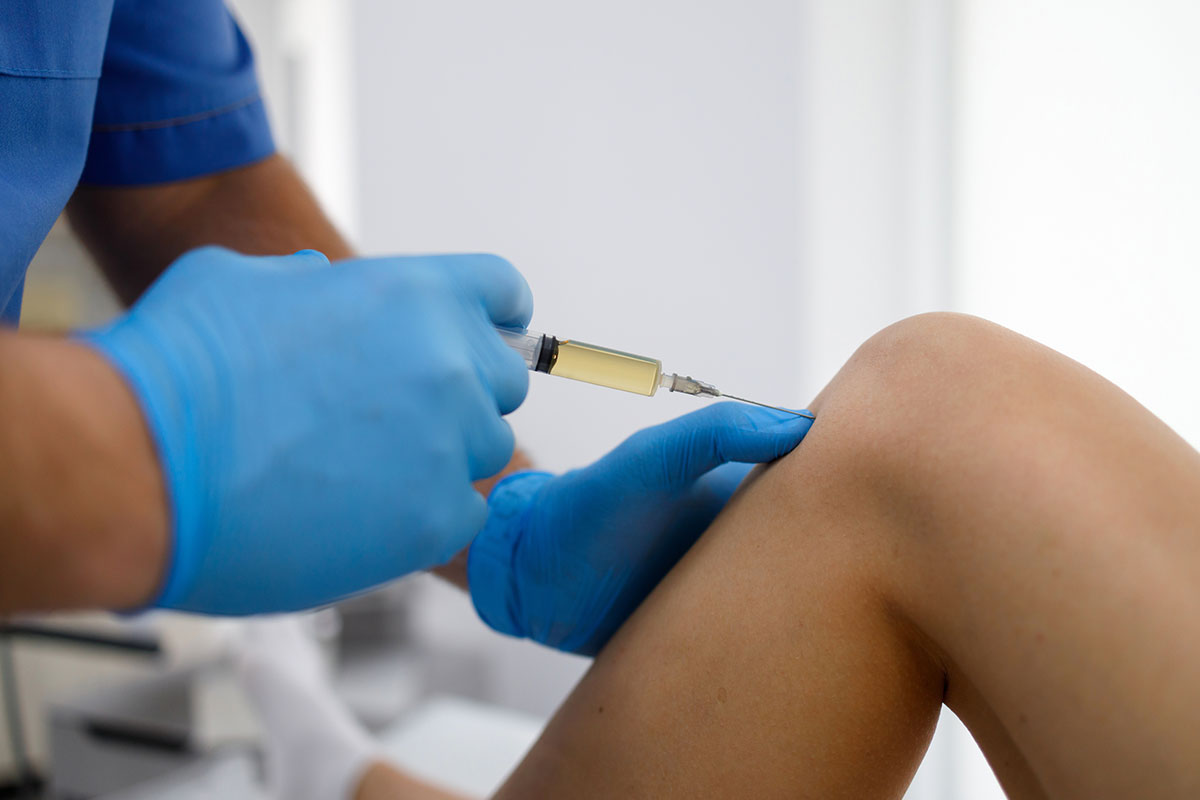Atlas Medical Center offers platelet-rich plasma (PRP) Therapy in Fort Worth, a cutting-edge treatment that utilizes the body’s healing abilities to treat chronic pain and discomfort. PRP is derived from the patient’s blood and contains concentrated platelets and growth factors, which promote tissue regeneration and accelerate the healing process.
The Ultimate Regenerative Therapy For Chronic Pain
PRP therapy is a medical procedure that utilizes the healing properties of platelets found in our blood. During the treatment, a small amount of blood is drawn from the patient and spun in a centrifuge to separate the platelets and growth factors. This concentrated plasma is injected into the targeted area, such as the damaged muscles and soft tissues, stimulating tissue repair, reducing inflammation, and promoting new cell growth. PRP therapy has shown promising results in treating the source of chronic pain.
Conditions Treated With PRP Therapy:
- Osteoarthritis and joint pain
- Tendonitis and tendinopathy
- Ligament sprains and strains
- Muscle injuries and tears
- Sports injuries
- Rotator cuff tears
- Plantar fasciitis
- Chronic low back pain
- Degenerative disc disease
- Tennis elbow (lateral epicondylitis)
- Golfers elbow (medial epicondylitis)
- Carpal tunnel syndrome
- Achilles tendinitis
- Knee pain (e.g., patellar tendinopathy)
- Hip pain (e.g., trochanteric bursitis)
- Ankle sprains and instability


What is PRP (Platelet-Rich Plasma)?
Blood comprises various components, including red blood cells, white blood cells, plasma, and platelets. Platelets are small cells that play a vital role in the clotting process. Platelet-rich plasma (PRP) is a concentrated solution of platelets obtained from the patient’s blood. Through centrifugation, platelets and their associated growth factors — which regulate cell growth, division, and healing — are separated and collected. The resultant PPR serum can be used for numerous medical purposes to stimulate the body’s natural healing mechanisms.
How PRP (Platelet-Rich Plasma) Therapy Works
PRP therapy in Fort Worth utilizes the therapeutic properties of platelets and growth factors to address chronic pain and musculoskeletal conditions. When PRP is injected into the affected area, the concentrated platelets release growth factors that stimulate tissue repair and regeneration. These growth factors attract stem cells to the site, enhance collagen production, and reduce inflammation. By promoting healing and improving tissue quality, PRP therapy can alleviate pain, enhance joint function, and accelerate recovery in conditions such as osteoarthritis, tendonitis, ligament sprains, and muscle injuries.
Benefits of PRP Therapy:
- Stimulates tissue regeneration and healing
- Accelerates the recovery process
- Minimally invasive procedure
- Utilizes the body’s own healing abilities
- Customizable treatment based on individual needs
- May reduce the need for surgery or more invasive treatments
- Can be used in combination with other treatments for synergistic effects
- Fewer side effects compared to some pharmaceutical interventions
- Long-lasting results in many cases
- Suitable for a wide range of conditions and body areas
What Happens During PRP Therapy?
During PRP therapy, your healthcare provider will begin by drawing a small amount of your blood. This blood sample is processed in a centrifuge to separate the platelet-rich plasma from other components. The concentrated PRP is injected into the targeted area using a fine needle. The procedure takes about 30 minutes and is performed in-office. Your healthcare provider will provide specific post-treatment instructions for optimal recovery.
The Recovery Process After PRP Therapy
After Fort Worth PRP therapy, your recovery process is generally straightforward. It’s normal to experience mild soreness, swelling, or bruising at the injection site, but these symptoms subside within a few days. You can resume your normal activities immediately, although strenuous exercise and intense physical activity should be avoided for a short period. Your healthcare provider will provide specific post-treatment guidelines, including applying ice, avoiding certain medications, and following a gentle stretching or rehabilitation program.
When Can I Expect The Results?
The timeline for experiencing results after PRP therapy can vary depending on the individual and the condition being treated. In some cases, you may start noticing improvements within a few weeks, while in others, it may take several months. It’s important to have realistic expectations and understand that PRP therapy stimulates the body’s natural healing processes, which can take time. Your healthcare provider will discuss the expected timeline and provide guidance on what to expect based on your specific situation.

Why Choose Us For Your PRP Therapy in Fort Worth
Atlas Medical Center offers a progressive approach to healing through non-surgical reparative, restorative, and healing therapies. If you’re seeking an alternative to long-term use of pharmaceutical painkillers or surgical procedures, we are here to help. Our experienced team specializes in conservative therapies aimed at relieving pain and improving mobility. Schedule your consultation today for PRP therapy in Fort Worth and explore the possibilities of regenerative medicine at Atlas Medical Center.